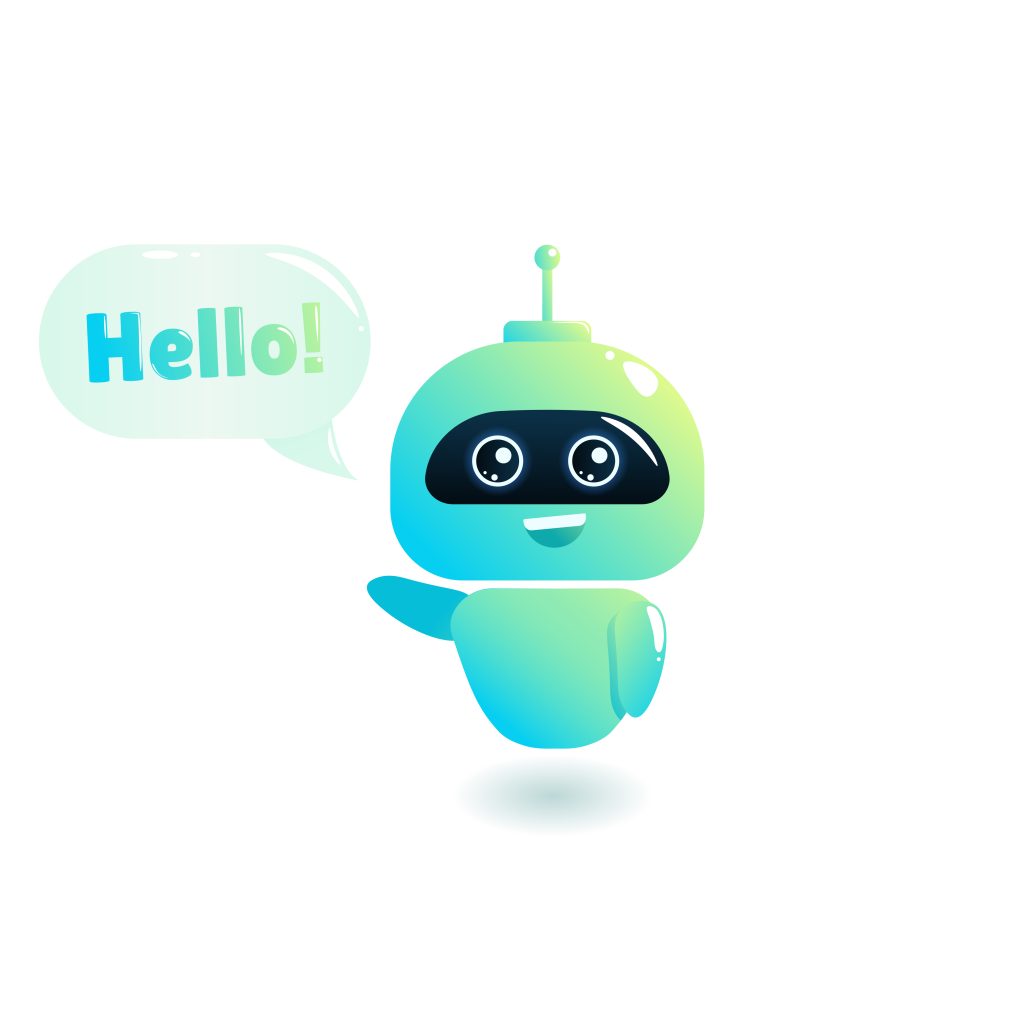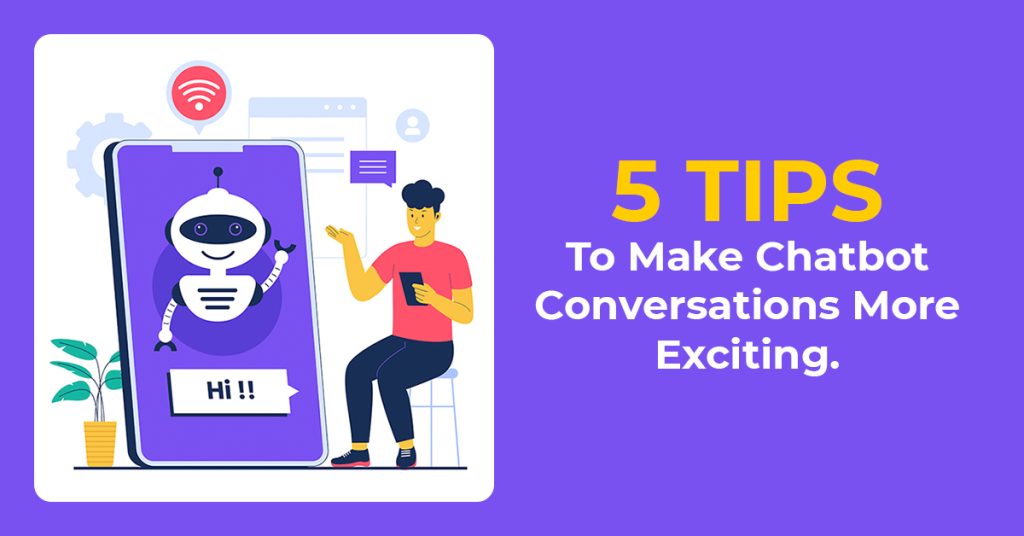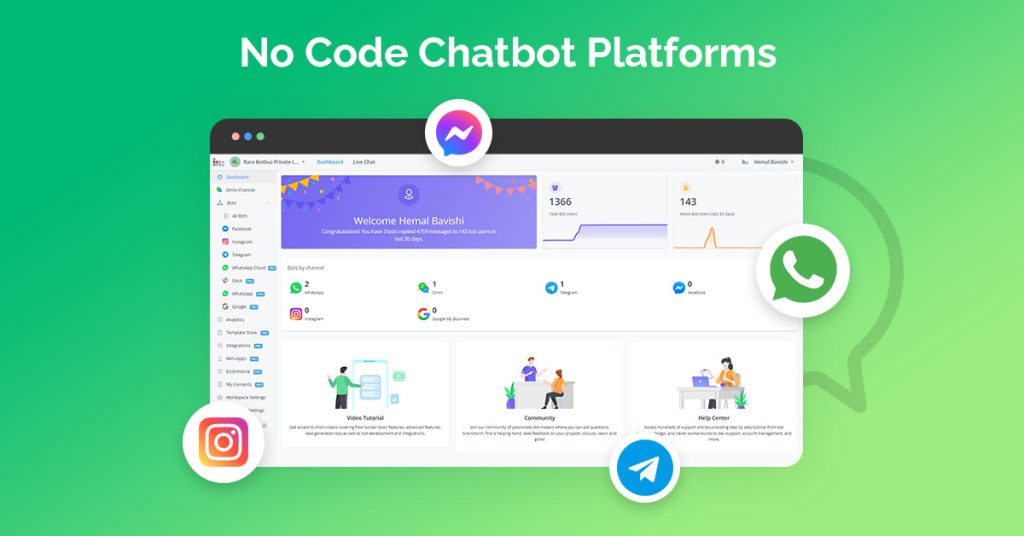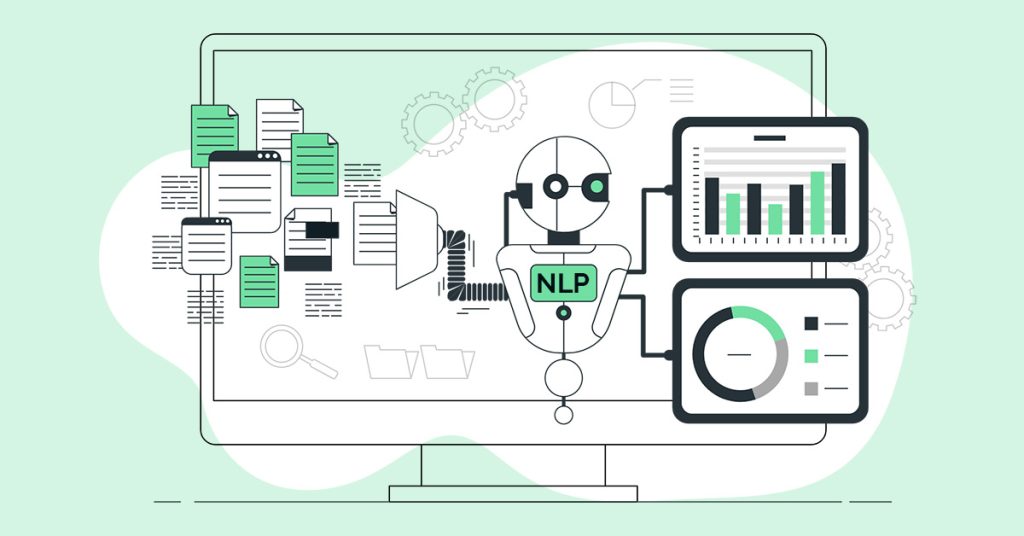Chatbots are becoming popular in a variety of industries. From customer service to e-commerce to education, chatbots play a powerful role. And for good reason: chatbots can be a powerful tool for engaging users. It provides them with the information and assistance they need in a timely and efficient manner.
However, not all chatbots are created equal. Some chatbots can be quite dull and robotic, while others can be downright annoying. If you want to create a chatbot that users will actually enjoy interacting with, it’s important to put some thought into making the conversation more exciting.
Setting the stage for exciting chatbot conversations:
The first step to creating an exciting chatbot conversations is to set the stage correctly. This means giving your chatbot a clear personality and tone of voice. Do you want your chatbot to be friendly and approachable? Or do you want it to be more professional and authoritative? Once you’ve decided on your chatbot’s personality, you can start writing dialogue that reflects that personality.
It’s also important to make sure that your chatbot’s dialogue is engaging and interesting. This means using a variety of sentence structures and avoiding overly technical or jargon-filled language. You should also try to be creative and original in your responses.
The importance of user engagement in chatbot conversations:
User engagement is essential for successful chatbot interactions. If users are not engaged with the chatbot conversations, they are less likely to use the chatbot in the future. Hence, less likely to recommend it to others.
There are a number of factors that can affect user engagement in chatbot conversations. Some of the most important factors include the chatbot’s personality, the quality of the conversation, and the ease of use of the chatbot interface.
Tips to make chatbot conversations more exciting:
1) Craft Creative Greetings:
The impact of the first impression in chatbot conversation.
The first impression that a chatbot makes on a user can have a significant impact on their overall experience. A creative and engaging greeting can help to set the tone for a positive interaction, while a bland or unoriginal greeting may leave the user feeling bored or uninterested.
Examples of creative and engaging chatbot greetings.
Use humor: A well-placed joke can make the user smile and feel more comfortable interacting with the chatbot.
For example, “Welcome to our chatbot! I’m still under development, but I’m learning new things every day. Just don’t ask me to write a poem about a chatbot. I’m not that good yet.”
For example, a chatbot could greet a user by saying “Hey there! I’m the chatbot that’s always up for a good chat.” or “I’m here to help you with all your [brand name] needs, even if you’re asking me silly questions.”
Be personal: Address the user by name and use language that is appropriate for their age and region.
For example, “Hey [user name]! How can I help you today?” Welcome back, [user’s name]! What can I do for you today?”
Be creative: Don’t be afraid to think outside the box and come up with a greeting that is unique to your chatbot.
For example, “Welcome to the world of [brand name]! I’m your virtual guide. I can help you with anything you need, from finding the perfect product to learning more about our company.”
For example, a chatbot could greet a user by saying “Welcome to the chatbot dimension! How can I help you today?” or “I’m the chatbot that’s always happy to see you. What can I do for you?”
Examples of chatbot use cases:
- “Welcome to our new chatbot! We’re still under development, but we’re here to help you with all your customer service needs. Just ask us a question and we’ll do our best to answer it.”
- “Hi there! I’m here to help you learn more about our new product line. Just ask me a question about any of our products and I’ll be happy to provide you with more information.”
- “Welcome to our chatbot! We’re here to help you with all your banking needs. Just tell us what you need and we’ll be happy to assist you.”
2) Use Emojis and GIFs:
Emojis and GIFs can be a great way to make your chatbot conversations more exciting and engaging. Here are some tips on how to use them effectively:
- Use emojis to add personality and tone to your responses. For example, you could use a smiley face emoji to convey a friendly and helpful tone, or a thumbs up emoji to show that you understand and agree with the user.
- Incorporate GIFs to express emotions and reactions that are difficult to convey with text alone. For example, you could use a GIF of someone laughing to show that you found the user’s joke funny, or a GIF of someone nodding to show that you understand what they are saying.
- Be mindful of your audience and the context of the conversation. Avoid using too many emojis or GIFs, as this can come across as unprofessional or spammy. Additionally, be sure to choose emojis and GIFs that are relevant to the conversation and that will be appropriate for your target audience.
Examples of how you can use emojis and GIFs in your chatbot conversations
- Welcome message: “Hi there!
How can I help you today?”
- Positive response: “Great!
I’m happy to help with that.”
- Negative response: “Oh no!
I’m sorry to hear that. Let’s see what we can do to fix it.”
- Confused response: “Hmm, I’m not sure I understand.
Can you please rephrase your question?”
- Excited response: “Yay!
I’m so excited to help you with this project!”
3) Gamify the Conversation:
Turning chatbot conversations into fun games:
Chatbots are increasingly being used to provide customer service, education, and entertainment. But how do you make chatbot conversations more engaging and exciting? One way is to gamify them.
Gamification is the process of applying game-design elements and principles to non-game contexts. It has been shown to be an effective way to increase engagement, motivation and retention.
Gamification elements in chatbot conversation:
- Points: Users can earn points for completing tasks, answering questions correctly, or helping other users. Points can be used to unlock new features, levels, or rewards.
- Badges: Badges are digital awards that users can earn for completing specific achievements. Badges can be displayed on the user’s profile and shared with friends.
- Leaderboards: Leaderboards show users how they rank compared to other users. Leaderboards can be used to encourage competition and motivate users to improve.
- Challenges: Challenges are tasks or goals that users can choose to complete. Challenges can be individual or group-based, and they can be simple or complex.
- Virtual goods: Virtual goods are digital items that users can collect or use within the chatbot. Virtual goods can be used to customize the user’s experience or to unlock new features.
Examples of gamification elements in chatbot conversation:
- A travel chatbot could award users points for booking flights and hotels. Users could then redeem their points for rewards such as free travel insurance or airport lounge access.
- A customer service chatbot could challenge users to complete a quiz about a product or service to earn a discount.
- A learning chatbot could give users badges for completing different lessons or modules.
- A fitness chatbot could set challenges for users to meet their fitness goals. The goals like walking a certain number of steps each day or running a certain distance each week.
Gamification elements can be used to make chatbot conversations more engaging and motivating for users. By using gamification elements, you can encourage users to use your chatbot more often and to achieve their goals.
4) Personalize and Humanize:
Personalization and humanization are essential for creating chatbot conversations that are more exciting and engaging. When users feel like they are talking to a real person who understands them, they are more likely to continue the chatbot conversation and come back for more.
The power of personalization in chatbot conversations.
Personalized chatbot conversations can be more engaging and effective for a number of reasons.
- First, they show users that the chatbot is paying attention to them and their specific needs. This can make users feel more valued and appreciated.
- Second, personalization can help the chatbot to provide more relevant and helpful responses. For example, if the chatbot knows that the user is interested in a particular product or service, it can provide them with more information about that product or service.
- Third, personalization can help to build trust between the user and the chatbot. When users feel like they can trust the chatbot, they are more likely to use it and to follow its recommendations.
Strategies to humanize your chatbot conversations:
- Use the user’s name. This is one of the simplest and most effective ways to personalize the chatbot conversation.
- Use natural language. Avoid using overly formal or robotic language. Instead, use language that is more conversational and natural-sounding.
- Add personality. Give your chatbot a personality that reflects your brand values. This can be done through the way the chatbot speaks, its tone of voice, and the types of jokes or humor it uses.
- Be empathetic. Try to understand the user’s emotions and respond accordingly. For example, if the user is frustrated, the chatbot should offer sympathy and support.
- Make mistakes. It’s okay for your chatbot to make mistakes. This can actually make it seem more human. If the chatbot does make a mistake, it should apologize and try to correct it.
Example of a personalized and humanized chatbot conversations.
User: I’m looking for a new pair of running shoes.
Chatbot: Hi [User Name], thanks for reaching out! I’m happy to help you find a new pair of running shoes. What kind of running shoes are you interested in?
User: I’m looking for a pair of trail running shoes.
Chatbot: Great! Here are a few trail running shoes that I recommend:
[Shoe 1] [Shoe 2] [Shoe 3]
These shoes are all designed for different types of terrain, so you can choose the one that’s right for you.
Would you like to learn more about any of these shoes?
This response is personalized because it uses the user’s name and recommends specific products based on their interests. It is also humanized because it uses natural language and avoids being overly formal. Additionally, the chatbot is empathetic and understanding, and it offers to provide more information if the user is interested.
5) Implement Interactive Storytelling:
Interactive storytelling allows the reader to participate in the story. This is done by giving the reader choices, puzzles to solve, or challenges to overcome. Interactive storytelling is a great way to engage users with your chatbot. Thus, making the chatot conversations more exciting.
Examples of interactive storytelling elements that you can implement in your chatbot conversations:
Multiple choice prompts: Give users the ability to choose their own path through the story by presenting them with multiple choice prompts at key points.
Branched conversations: Based on the user’s choices, the chatbot will follow different branches of the conversation, leading to different outcomes.
Side quests: In addition to the main story, offer users the opportunity to complete side quests that can unlock new rewards or information.
Mini-games: Include mini-games in your chatbot conversations to add an element of fun and challenge.
Also read : Best Autoreply Message Samples For Business:
Make chatbot conversations more exciting through Botbuz Chatbot:
Chatbots are a great way to have conversations that are more exciting and engaging.
With Botbuz chatbot, you can do the following:
- Use humor and creativity in your conversations.
- Be informative and helpful.
- Be responsive and timely.
- Personalize the experience.
- Ask open-ended questions.
- Use emojis and GIFs.
- Tell stories and anecdotes.
- Play games or quizzes.
- Run contests and giveaways.
Here are some specific examples of how you can make Botbuz chatbot conversations more exciting,
- Use humor and creativity. You can do this by telling jokes, sharing funny stories, or using creative language. For example, you could say something like, “I’m not sure if you’ve heard, but a pirate ship pulled into port yesterday. The crew was all parrot-headed!” or “I’m so hungry, I could eat a horse! But I’m not sure if that would be a good idea. I’m already a little bit of a horse.”
- Be informative and helpful. You can do this by providing users with information that they need or helping them with tasks. For example, you could provide them with the latest news, help them book a flight, or answer their questions about a product or service.
- Be responsive and timely. You should always respond to users as quickly as possible. This will help to keep them engaged and prevent them from getting frustrated.
- Personalize the experience. You can do this by using the user’s name and other information to make the conversation more relevant. For example, you could say something like, “Hi [user’s name], how can I help you today?” or “I see that you’re interested in [topic]. Here are some articles that you might find helpful.”
- Ask open-ended questions. This will encourage users to provide more than one-word answers and start a conversation. For example, instead of asking “What is your name?”, you could ask “Tell me a little bit about yourself.”
- Use emojis and GIFs. This can make your chatbot’s responses more visually appealing and expressive. For example, if you’re telling a joke, you could use a laughing face emoji. Or, if you’re sharing a fact, you could use a globe emoji.
- Tell stories and anecdotes. This is a great way to engage users and share information in a more interesting way. For example, you could tell them a story about how your company was founded or a funny story about something that happened to a customer.
- Play games or quizzes. This is a fun way to interact with users and teach them something new. For example, you could play a trivia game about your company’s products or services. Or, you could play a word game like hangman or Wordle.
- Run contests and giveaways. This is a great way to incentivize users to interact with your chatbot and promote your brand. For example, you could give away a free product or service to users who participate in a contest. Or, you could give away a discount to users who sign up for your newsletter.
Key takeaways for exciting chatbot conversations:
- Give your chatbot a personality. This will make it more relatable and engaging for users.
- Use humor and creativity. This will help to keep users interested and entertained.
- Be informative and helpful. Users should be able to learn something from your chatbot or get help with a task.
- Be responsive and timely. Users should not have to wait too long for a response from your chatbot.
- Personalize the experience. Use the user’s name and other information to make the chatbot conversations more relevant.





